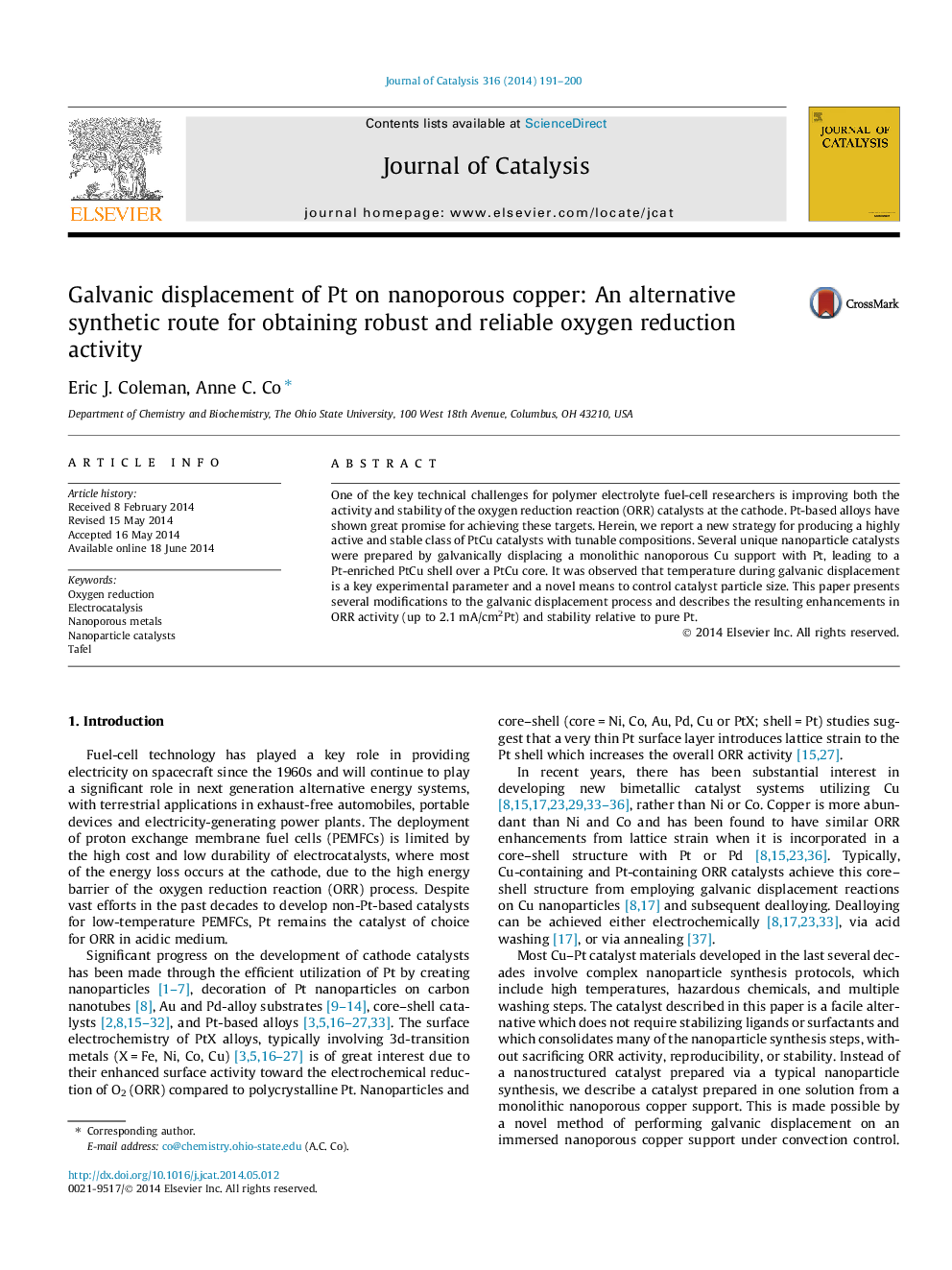| کد مقاله | کد نشریه | سال انتشار | مقاله انگلیسی | نسخه تمام متن |
|---|---|---|---|---|
| 60978 | 47557 | 2014 | 10 صفحه PDF | دانلود رایگان |

• Feasible, robust preparation of uniform Pt onto a tunable base-metal nanoporous support.
• Galvanic displacement conditions such as temperature, time, and concentration are key to altering surface reactivity.
• ORR specific activity of 2.1 mA/cm2 PtCu outperforms commercial Pt/C catalyst.
• PtCu catalysts maintained 60% structural integrity over 30,000 cycles.
One of the key technical challenges for polymer electrolyte fuel-cell researchers is improving both the activity and stability of the oxygen reduction reaction (ORR) catalysts at the cathode. Pt-based alloys have shown great promise for achieving these targets. Herein, we report a new strategy for producing a highly active and stable class of PtCu catalysts with tunable compositions. Several unique nanoparticle catalysts were prepared by galvanically displacing a monolithic nanoporous Cu support with Pt, leading to a Pt-enriched PtCu shell over a PtCu core. It was observed that temperature during galvanic displacement is a key experimental parameter and a novel means to control catalyst particle size. This paper presents several modifications to the galvanic displacement process and describes the resulting enhancements in ORR activity (up to 2.1 mA/cm2Pt) and stability relative to pure Pt.
Figure optionsDownload high-quality image (179 K)Download as PowerPoint slide
Journal: Journal of Catalysis - Volume 316, July 2014, Pages 191–200